Two months ago, we showed you the warning signs that were in place for the end of the 9-year bull market. The evidence continues to accumulate. Is now the time to get out?
The most visible bearish warning sign continues to come courtesy of the famed Dow Theory.
The Dow Theory states that the Dow Jones Transportation Average (DJTA) must also be trading at new highs for the new highs of the Dow Jones Industrial Average (DJIA) to be confirmed, otherwise the trend of the DJIA is not sustainable.
And that’s still where we are today: The short-term trend of the DJTA is to the downside, yet the short-term trend of the DJIA is to the upside.
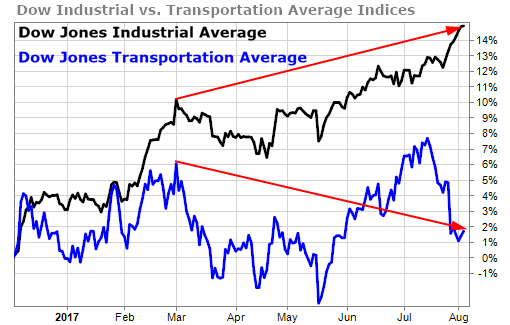
Since 1999, each time this has occurred has been the precursor of a downward move in the DJIA.
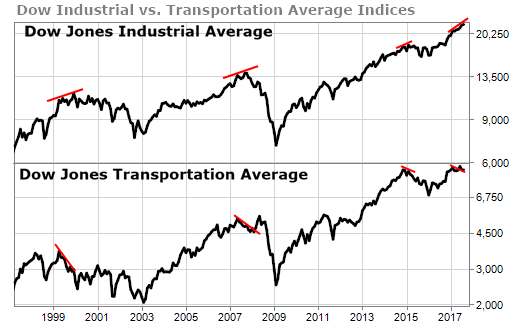
The CBOE Volatility Index (VIX) continues to trade at historically low values. I wrote about the VIX in April. This “Fear Index”, which measures the short-term volatility of S&P 500 options, just last week briefly traded at an all-time low of 8.84. It continues to trade in the low 10 area, which is the same area it traded in just before the market began its crash in 2007.
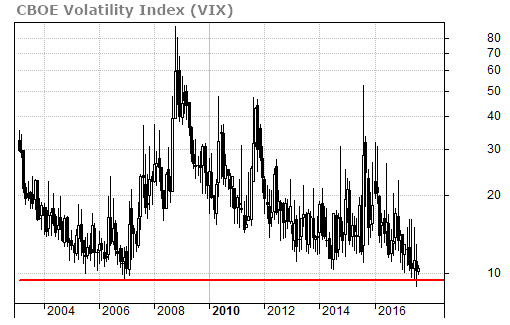
Yet another warning sign that the end is nigh comes from the divergence of two different ETFs that represent the S&P 500.
SPY, the SPDR S&P 500 ETF, replicates the S&P 500 exactly. It uses the same market capitalization weightings as the S&P 500 itself. The top ten holdings of the S&P 500 account for almost 20% of the index.
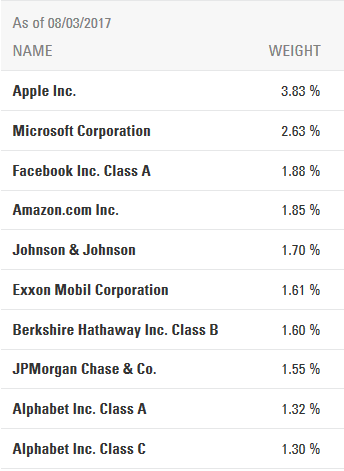
RSP, on the other hand, is the Guggenheim S&P 500 Equal Weight ETF. In this ETF, the 500 stocks in the S&P 500 are all equally weighted. Each stock is 0.2% of the index. Apple carries the same weight in RSP as any other stock in the S&P 500 instead of representing 3.86% of the index like it does for SPY.
Why are we looking at these? Because SPY has outperformed RSP over the past year and, in the past couple of weeks, the divergence between the two has become even greater
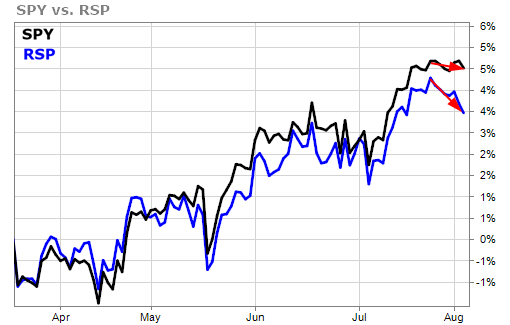
What we’re seeing in the outperformance of SPY over RSP is the fact that just a handful of the larger component stocks of the S&P 500 (think Facebook and Amazon) have been driving the growth in the S&P 500.
That’s not a healthy sign for the markets. We’d rather see ALL of the stocks in the S&P 500 leading the charge instead of just a few.
With all of this evidence staring us in the face, is it time to turn tail and head for the hills so that we don’t get mauled by the coming bear?
Or is this evidence just predicting a small correction in the near term that could give us opportunities to buy some stocks at a lower price than today and ride them to even greater heights?
I’ll share more of my thoughts on that question next week.
No matter what happens with the markets, however, I’m not worried. I’ve got my stops in place. I know what I’ve got at risk and I’m comfortable with it. Could something go terribly wrong? You bet. That’s what my stops are for. They’re like having your seatbelt on in the car.
On the other hand, could something go terribly right? Absolutely! The entire summer has seen the stock market climb a wall of worry to new all-time highs. Just today we saw stronger than expected job creation. Upside surprises are always a possibility.
My stops protect me on the way down, but they’ve also been moving higher and capturing greater profits on the way up. We should never forget that trailing stops are just as important for “unlimiting your upside” as they are for limiting your downside.
There are many signals that are telling me to be cautious, but the strongest signal of all – new all–time highs every few days – is keeping me in the game.





